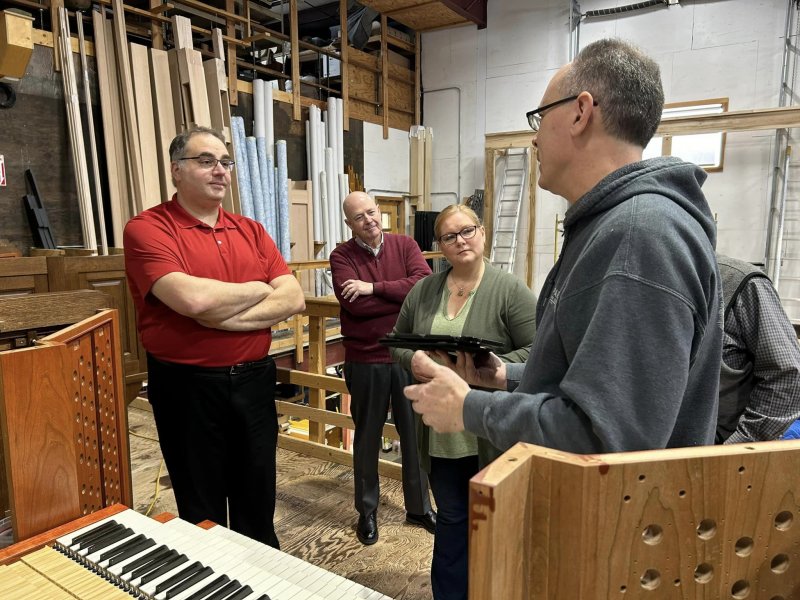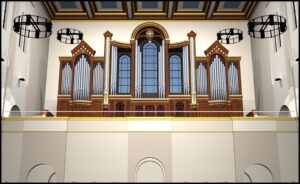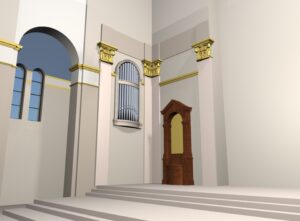Special to The Message

A generous gift to St. Benedict Cathedral will soon benefit the parish and the Diocese of Evansville.
A new pipe organ is currently under construction at Parsons Pipe Organ Builders of Canandaigua, New York. According to their website, Parsons is building a new, three-manual and pedal, 59-voice, 70-rank pipe organ to be installed at St. Benedict Cathedral early this summer.
St. Benedict Cathedral Music Director and Organist Jeremy Korba said the parish is excited for the new pipe organ to arrive.
“Parsons Pipe Organ Builders has been wonderful to work with,” Korba said. “They’ve been patient with us as we work to prepare the space for the organ’s arrival in May. Their attention to detail and desire to provide an amazing instrument for our Cathedral has been great to watch.”
The cathedral’s new organ is the combination of two organs with each organ having its own function. The organs can be played separately but can also be combined when the pews are full or when specific sounds are required.

The main organ, which will be located in the balcony (typically called the gallery) at the back of the cathedral, is called the Gallery organ. The Gallery organ contains 62 ranks, (sets of pipes), for a total of 3,780 pipes. The Gallery organ is used to encourage and support congregational singing, and to accompany choirs, cantors, vocal soloists and instrumentalists.
Parsons wrote on their website that new casework will be designed for the Gallery organ to conform to the Cathedral’s Lombard-basilica style architecture and will incorporate images of the Cross of St. Benedict. The case will also incorporate the stained-glass windows and measure 59 feet wide by 13 feet deep and 33 feet high at the peak of the central arch.
The secondary organ, which will be located at the front of the nave, is called the Nave organ. It will be housed in what is now a closed-off space toward the front of the cathedral. The room is located above the sacristy and behind the wall that stands perpendicular to the statue of the Blessed Mother.

In preparation for housing the Nave organ, an opening will be made between the nave and the vacant room to allow sound from the organ to enter the cathedral. The opening will be appropriately shielded with decorative casework and pipes. The Nave organ contains eight ranks, (sets of pipes), for a total of 560 pipes. This organ will be used to support smaller gatherings situated at the front of the cathedral and to accompany clergy and cantors.
Altogether, the Cathedral organ will contain 70 ranks and 4,370 pipes!
It’s often thought that pipe organs are built and assembled in a shop and simply lifted into place upon their arrival. While it’s true that once built, pipe organs are assembled, tested and made to play while at the builder’s workshop, prior to leaving the workshop, the entire organ is completely taken apart and expertly crated before being loaded into the delivery trailers.
Several 54-foot trailers will be required to deliver the organ to Evansville. Once delivered, the process to remove, stage and hoist the organ’s mechanisms, casework and pipes into the balcony is expected to take the better part of three weeks.
Look for more coverage of St. Benedict Cathedral’s new organ in future issues of The Message.
